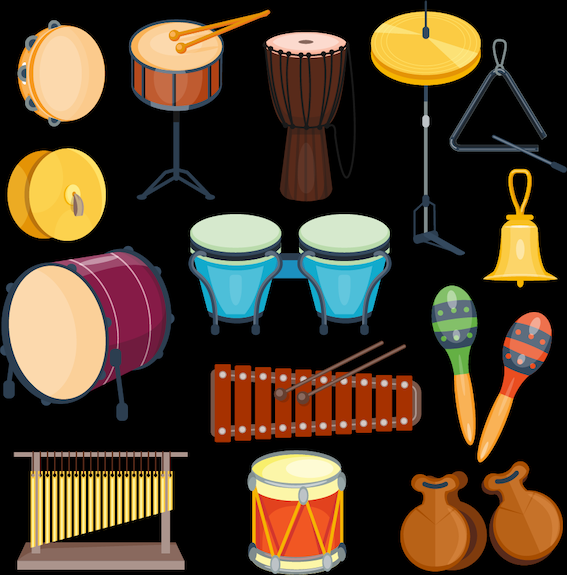Y2. Lesson 6. Dynamics - Forte & piano
Prior learning: Louder & softer
Duration: 30 minutes
Materials:
Keywords: Beat, rhythm, singing, chanting, partners, rhymes, circle games.
Difficulty: ![]()
Prepare
New note - re
Present
Forte & piano
Practise
The minim [too]
 Melodic development
Melodic development
![]() Students discover there is a note above the tonic note do.
Students discover there is a note above the tonic note do.
- If students are unfamiliar with this song, teach it line by line in a measured cadence and ask students to repeat after you.
- When secure, students should sing the song to the beat.
- Divide the class in two. Half sings and claps the beat, and the other half sings and claps the rhythm.
- Students then sing using time names only.
 Questions
Questions
- If the first two notes are called do, what are the second two notes called? [mi]
- Is mi a step or a skip above do? [skip]
- How many notes are at the end of the first phrase? [two]
- Is there anything different about one of those notes? [new note]
 Rhythmic development
Rhythmic development
![]() Students continue to develop their understanding of the minim [too].
Students continue to develop their understanding of the minim [too].
- Lead the class in singing Sally Go Round The Sun.
- Explain that the class are musical detectives and must discover where a note that lasts for two beats is to be found in the song.
- Remind students that a sound that lasts two beats has the time name too.
- Ask which words in the song last for two beats [Sun, moon].
 Creative movement
Creative movement
![]() Students use a blanket prop, walking and skipping whilst singing a known song.
Students use a blanket prop, walking and skipping whilst singing a known song.
 Questions
Questions
- What is a posy? [a small bunch of flowers]
- Why did people fall down when they sneezed? [A very long time ago, people could become very ill and fall to the ground after sneezing]
- Students form a circle. They hold the edges of a blanket.
- Lead the class in singing Ring O' Rosy [there are several variations on how this is spelt].
- Students will sing and stamp their feet to the beat while moving to their left in a circular fashion.
- On the words, "We all fall down", students crouch, still holding the blanket.
- They sing the rest of the song, and on the words, "We all jump up", students perform the action.
- On the next cycle, a student is chosen to sit in the middle under the blanket while the game progresses.
- When the song ends, the student is replaced by another.
- Students will skip on the next cycle [this is not as easy].
 Listening
Listening
![]() Students identify whether examples of music are forte or piano.
Students identify whether examples of music are forte or piano.
- Begin by teaching that when music is quiet, the word piano is used, and when it is loud, the word forte is used.
- Play the first of four tracks from the audio player.
- Ask students to identify if the music is loud [forte] or soft [piano].
- Ask for a show of hands in response.
- Repeat with the other three tracks.
 Visual learning
Visual learning
![]() Students discover how to draw the symbols for forte and piano.
Students discover how to draw the symbols for forte and piano.
- Project the graphic to the left on the board.
- Teach that when music is quiet, the word piano is used, which is written as the letter p.
- When music is loud, the word forte is used and is written as the letter f.
- Ask students to write the symbols in the notebooks.
- Both these words are Italian, like many words used in music.
- Teach that the musical instrument called the piano was originally called a pianoforte, which means soft-loud in Italian!
 Instruments
Instruments
![]() Students use classroom instruments to play piano and forte.
Students use classroom instruments to play piano and forte.

- Gather a large selection of classroom instruments on your table, including tuned and untuned percussion. The more instruments the better!
- Choose a volunteer to come forward to pick an instrument.
- Ask them if they believe that instrument can play piano and forte. Then ask them to demonstrate by playing piano and then forte.
- Guide them on how to hit their chosen instrument softly as well as loudly.
- Repeat with another volunteer and instrument.
- Continue until time permits.
 Part work
Part work
![]() Students sing and clap an ostinato to a known song.
Students sing and clap an ostinato to a known song.
- Students are seated and attentive.
- Lead the class in singing Big Black Train.
- Teach an ostinato pattern to be clapped, such as ti-ti, ta.
- Ask students to keep the pattern in their heads as they clap.
- The class should now sing and clap the ostinato pattern.
Students section

 Assess
Assess
Suggested lessons
Y1. Beat II

Y1. Beat III

Y1. Beat IV

